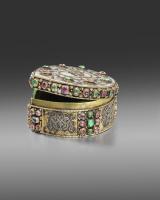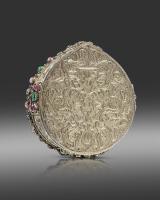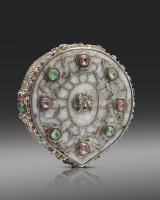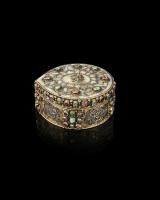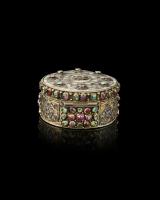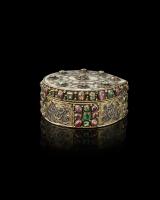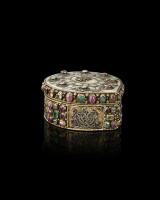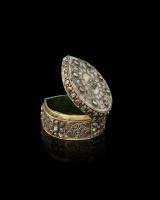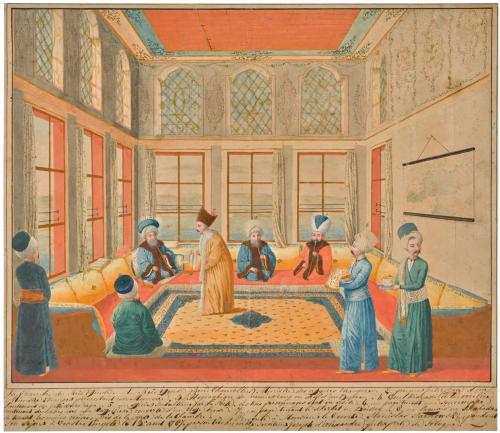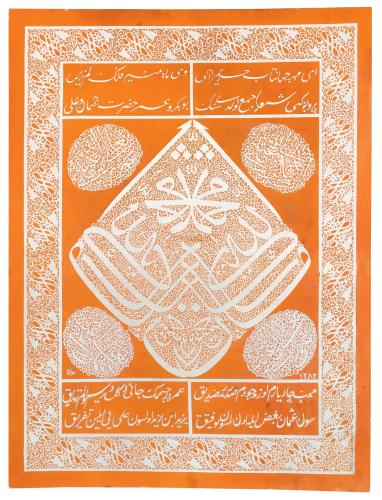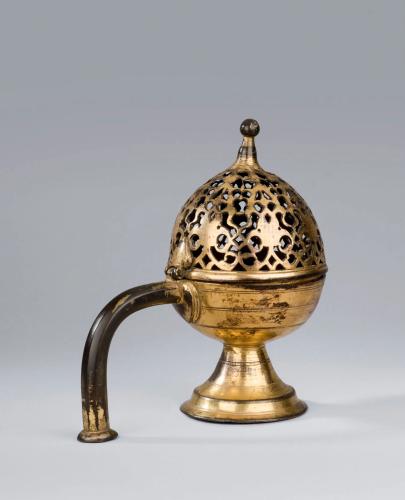
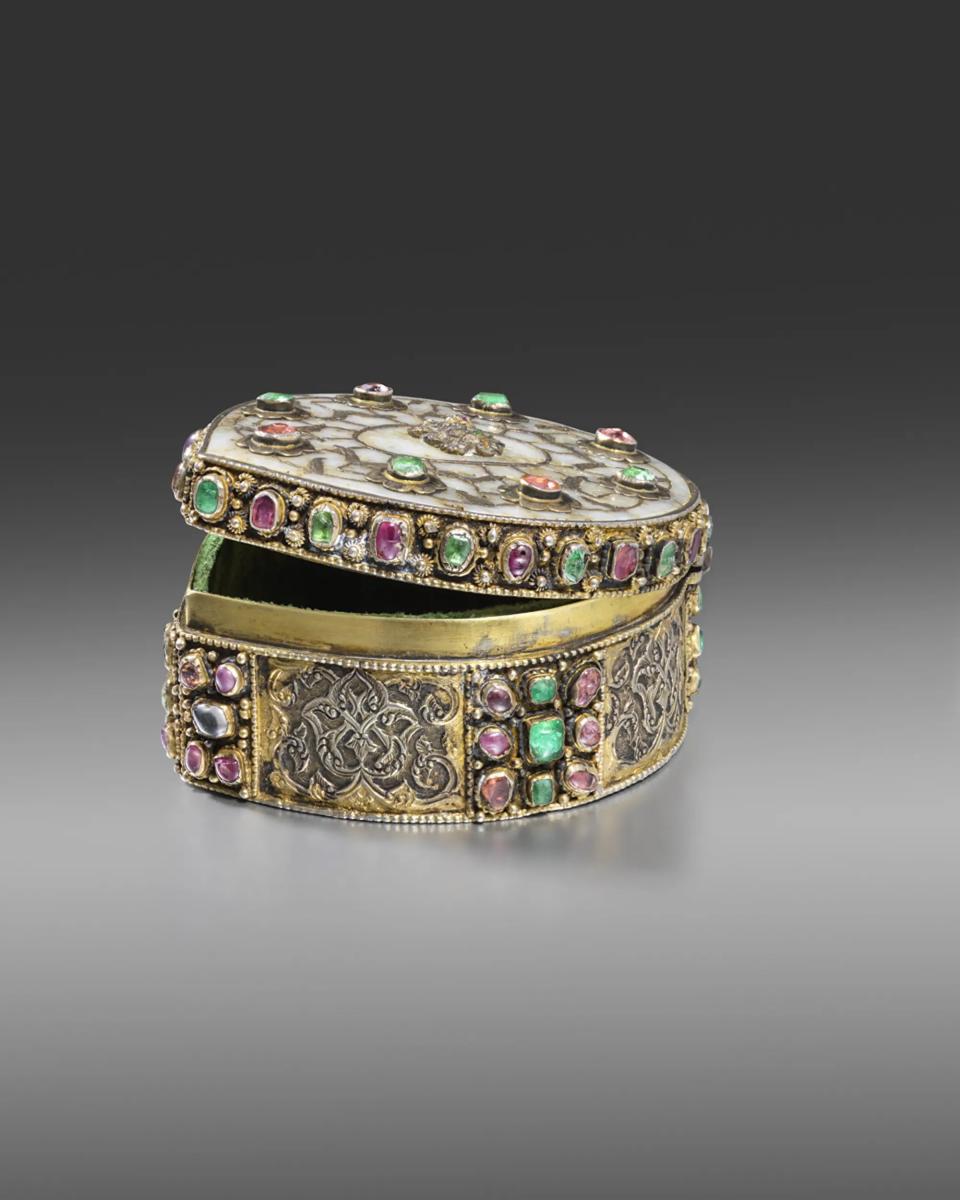
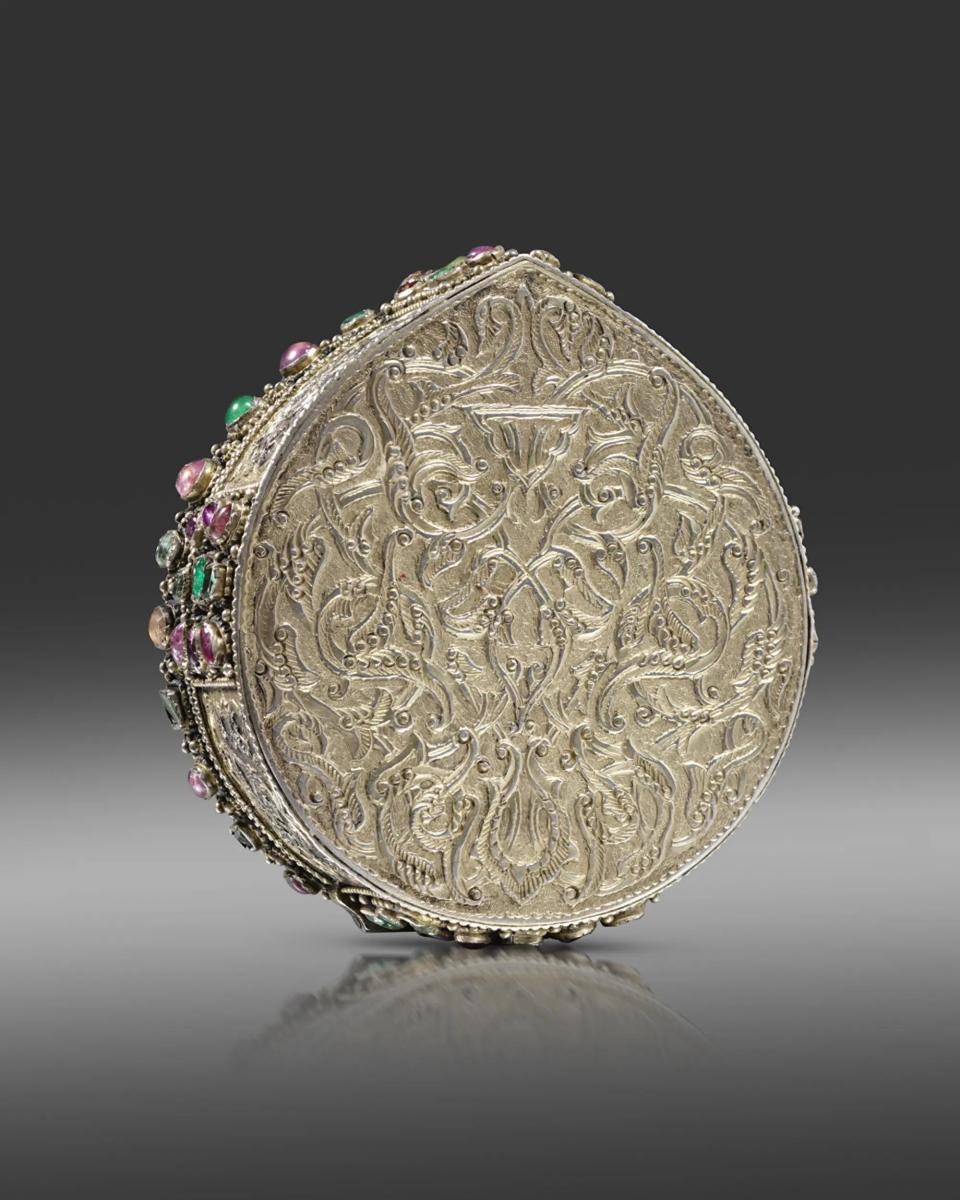
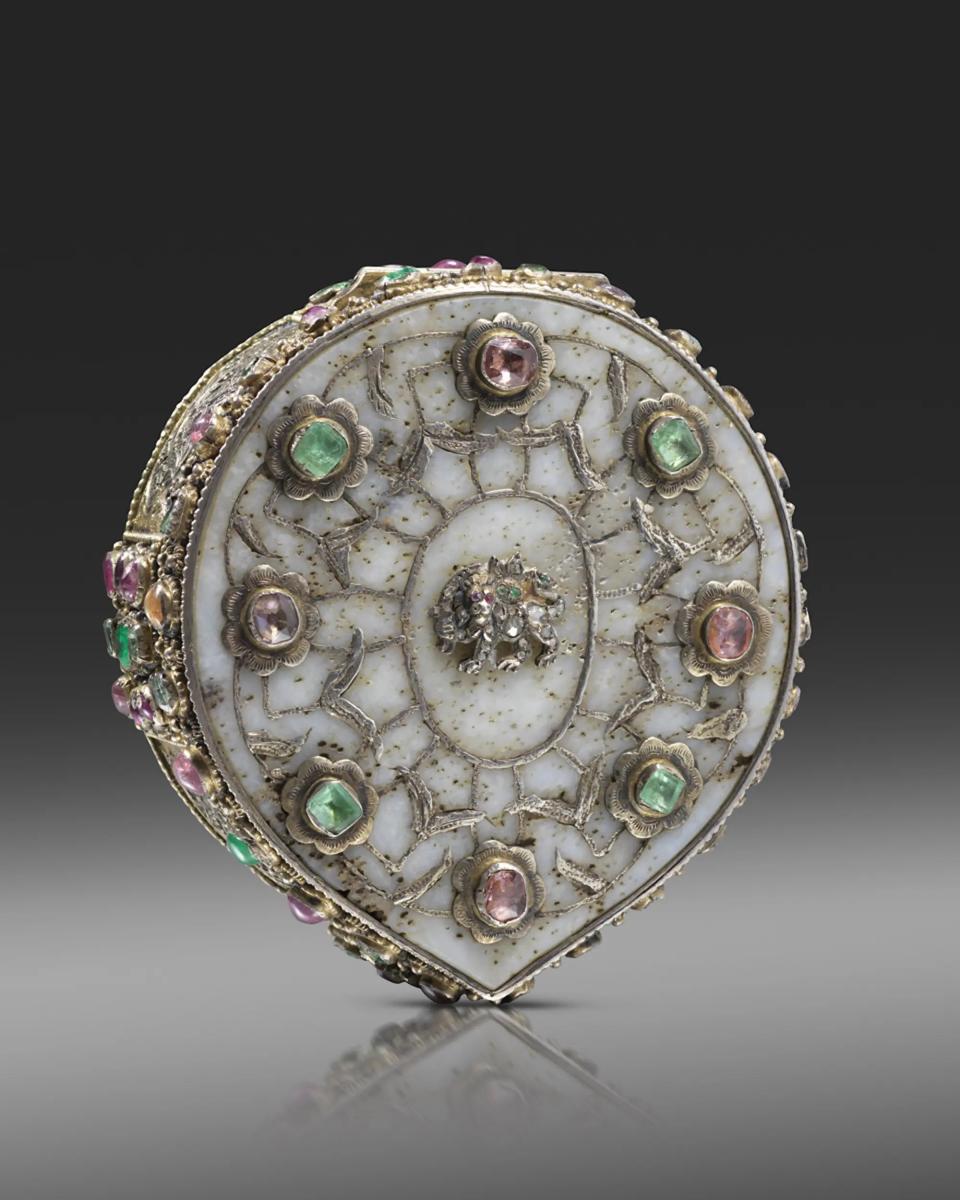
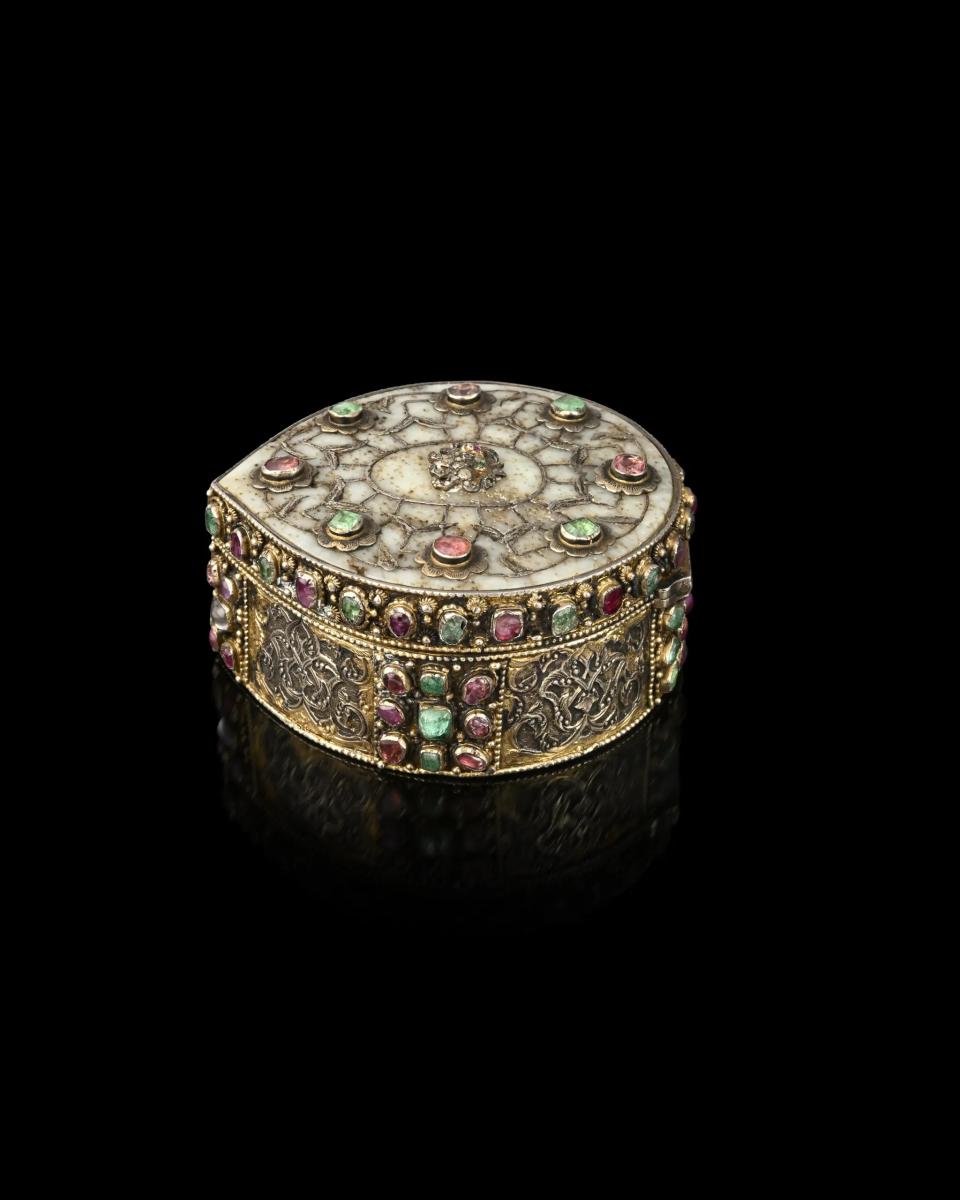
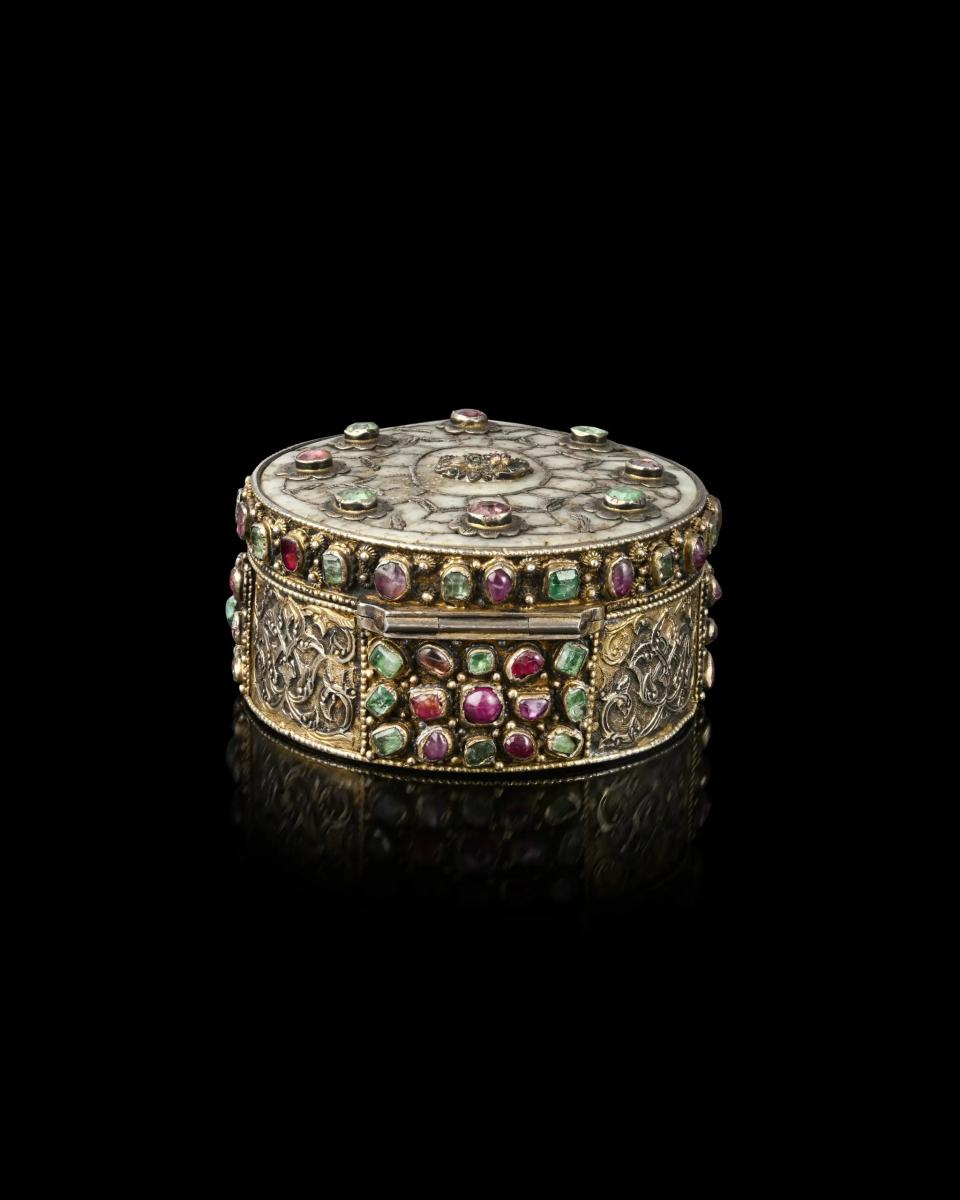
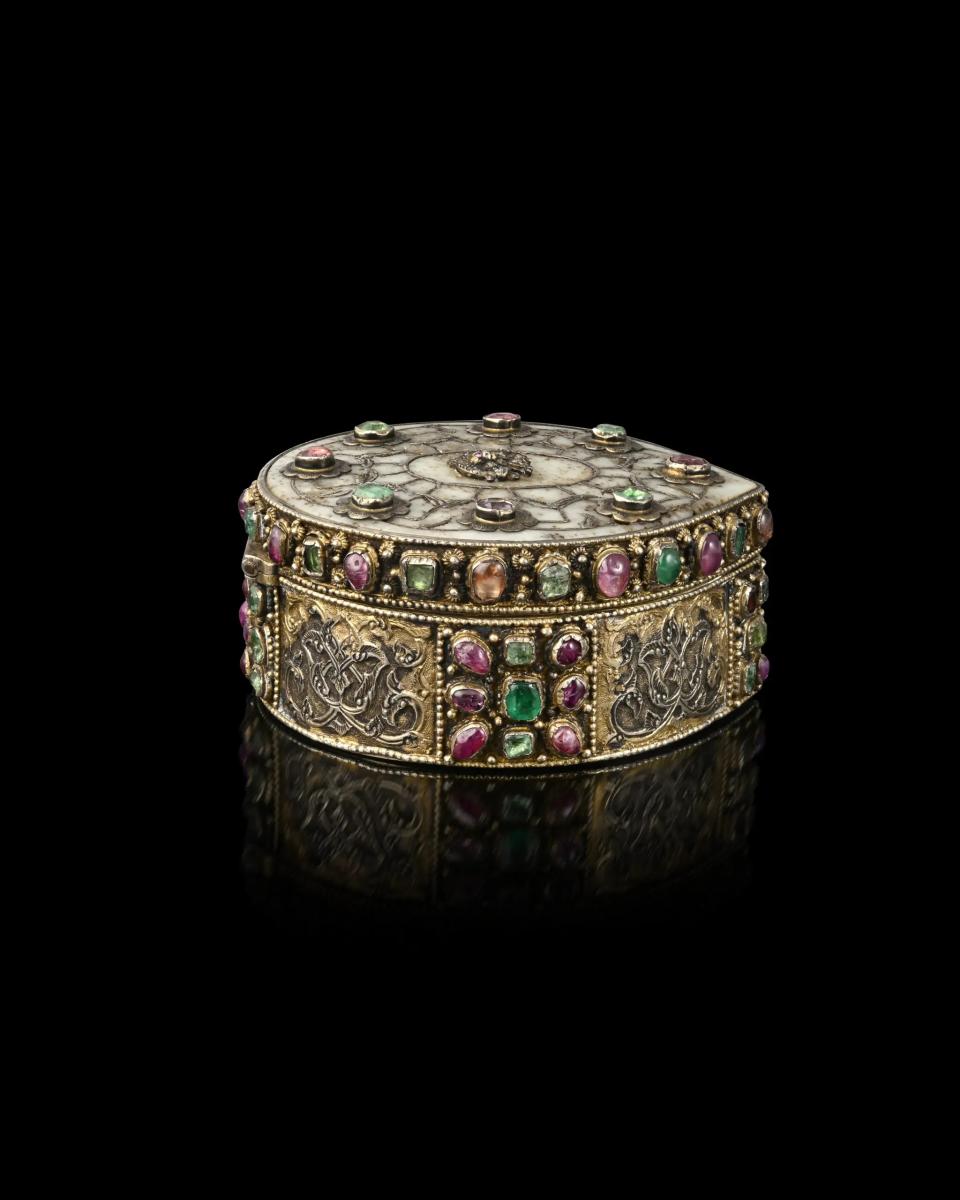
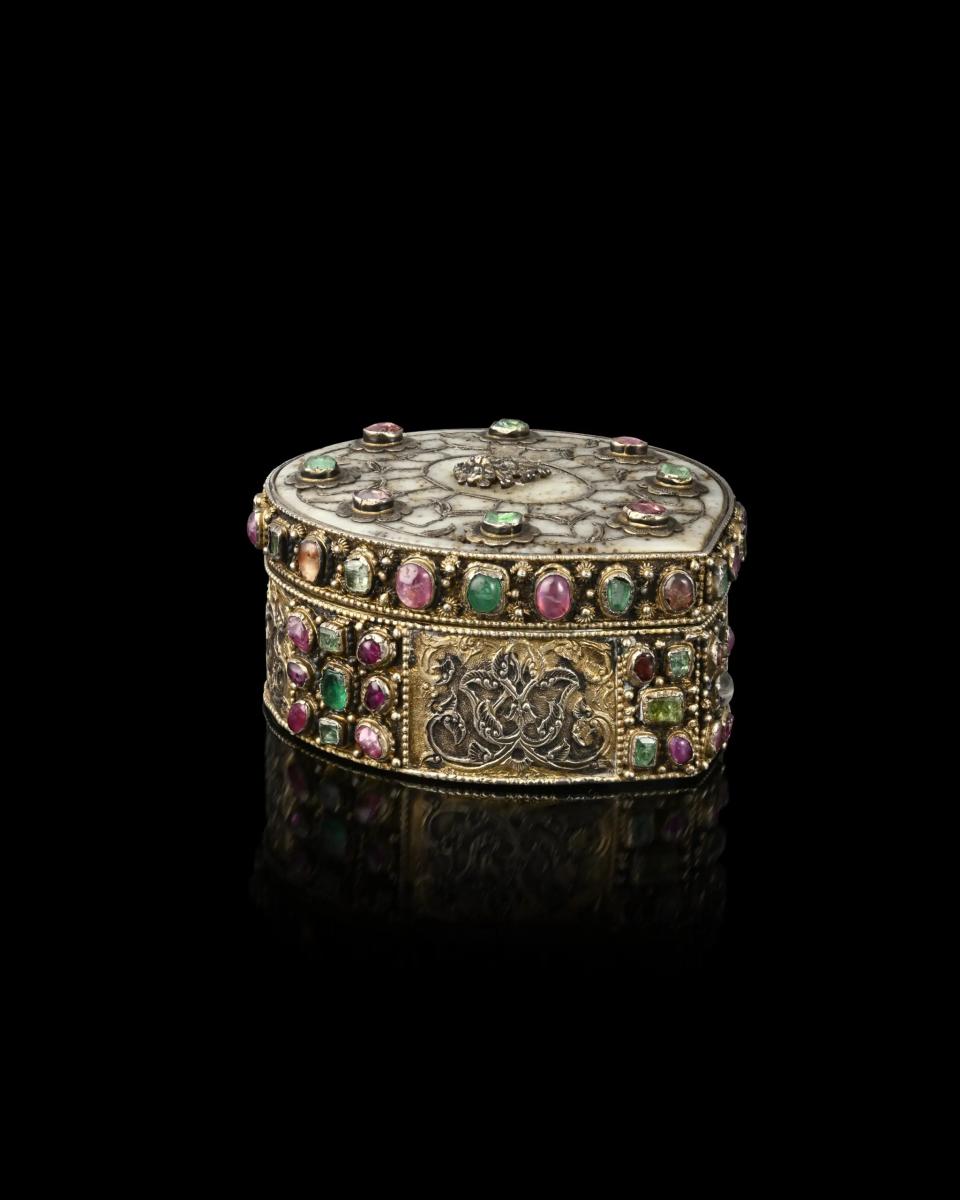
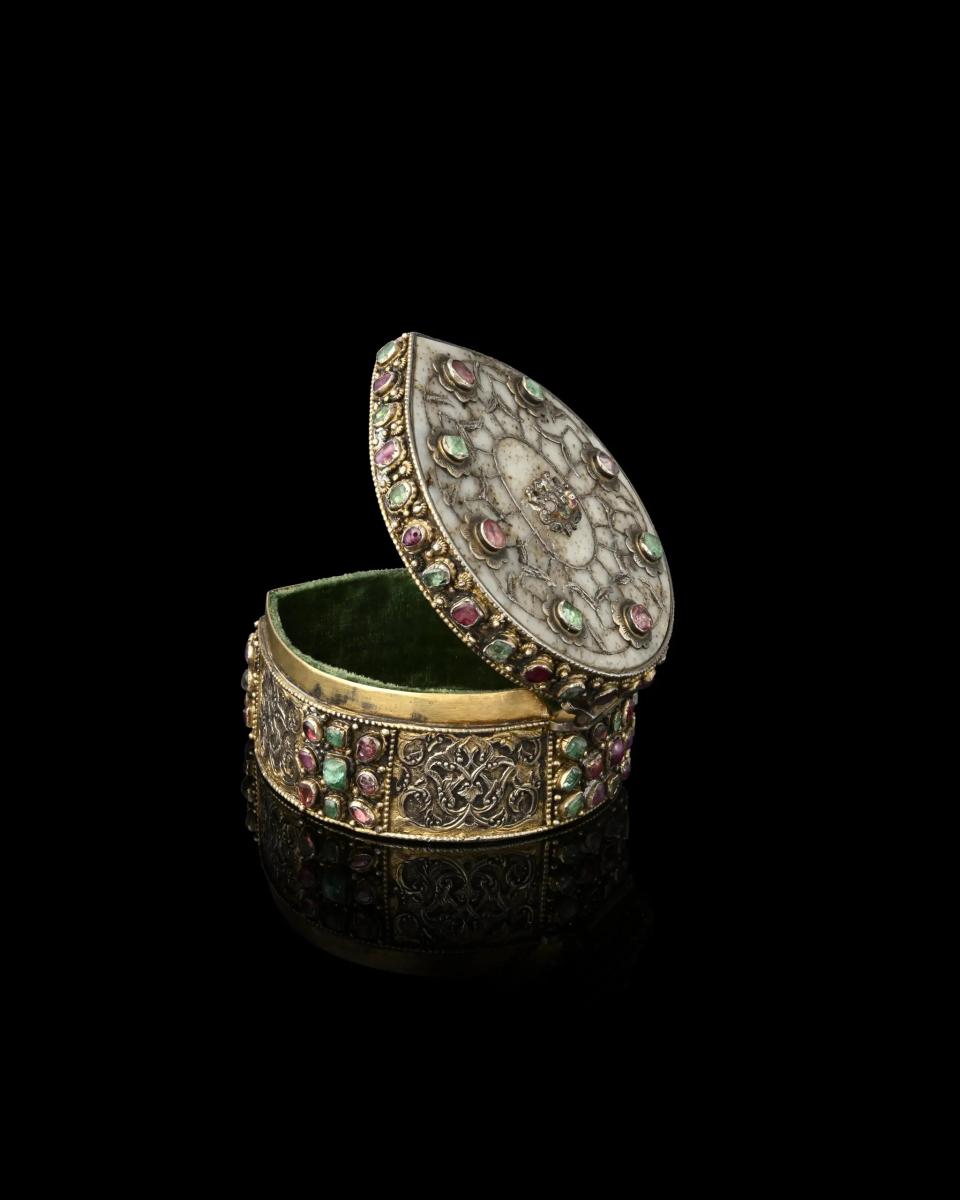
Price on application
This object is eligible for a Certificate of BADA Provenance
The BADA Standard
- Since 1918, BADA has been the leading association for the antiques and fine art trade
- Members are elected for their knowledge, integrity and quality of stock
- Our clients are protected by BADA’s code of conduct
- Our dealers’ membership is reviewed and renewed annually
- Bada.org is a non-profit site: clients deal directly with members and they pay no hidden fees
Exquisite Ottoman Sancak Qur’an Box Set with Pink Sapphires, Emeralds and Rubies.
Ottoman Empire.
17th Century.
Dimensions: 9.5cm x 8cm x 4.1cm.
The silver gilt body engraved with foliate tendrils (rumis). The jade lid set with four emeralds, four pink sapphires, surrounded by plaques set with thirteen emeralds and thirteen rubies. The ‘lion and sun’ in the centre is set with diamonds, rubies and emeralds. The sides decorated with scrolling tendrils, and set with eighteen emeralds and twenty-three rubies. Velvet-set interior, underside engraved and punched with interlacing scrolling tendrils. Thirty-five emeralds, thirty-six rubies, four pink sapphires in total.
The ‘lion and sun’ emblem set with rose cut diamonds in the centre of the jade lid is the royal symbol of the Persian Empire, ‘sheer o khorsheed’ in Persian. The lion, in front of the sun, holds a sword. This symbol may indicate that the box was sent from the Ottoman Empire to Persia as a diplomatic gift.
The base is decorated with an intricate design of masterfully executed rumi scrolls. The settings of the sapphires, emeralds and rubies are particularly Ottoman in style. Jewel-studded courtly objects including Qur’an covers, Chinese porcelain and other courtly objects comparable to the present box circulated among the Ottoman elite as gifts.
Sancak means banner in Turkish. Sancak Qur’ans were very small manuscripts (usually with a diameter of 4 cm.) which were intended to be carried on the finial of a banner, hence called a ‘sancak Qur’an’. The present box belongs to a small group of bejewelled, ornate boxes produced for protecting sancak Qur’ans. For a further discussion on a similar Ottoman jewel-studded case for a miniature Qur’an please see, Sheila Blair, Islamic Calligraphy, Edinburgh University Press, 2006, pp. 482-3.
For Ottoman courtly art works similarly decorated with set-jewels from the Topkapi Palace Museum see, Emine Bilirgen et al, Topkapi Palace: The Imperial Treasury, Istanbul, 2001, pp. 40-44 and 51. An octagonal jewel-set Qur’an box in the Topkapi Palace treasury bears the inscription “Mushaf-i Sherif” (the Nobel Book [Qur’an]). See, J.M. Rogers, Topkapi: The Treasury, London 1987, nos: 78, 80. For a comparable jewel-set sancak Qur’an box in the Topkapi Palace Museum see, Emine Bilirgen et al, Topkapi Palace: The Imperial Treasury, Istanbul, 2001, pp. 112-3.
Provenance:
- The Virginia House Museum.
- Ex-Collection of Ambassador and Mrs. Alexander Weddell, Richmond, Virginia, U.S.A.
The BADA Standard
- Since 1918, BADA has been the leading association for the antiques and fine art trade
- Members are elected for their knowledge, integrity and quality of stock
- Our clients are protected by BADA’s code of conduct
- Our dealers’ membership is reviewed and renewed annually
- Bada.org is a non-profit site: clients deal directly with members and they pay no hidden fees


